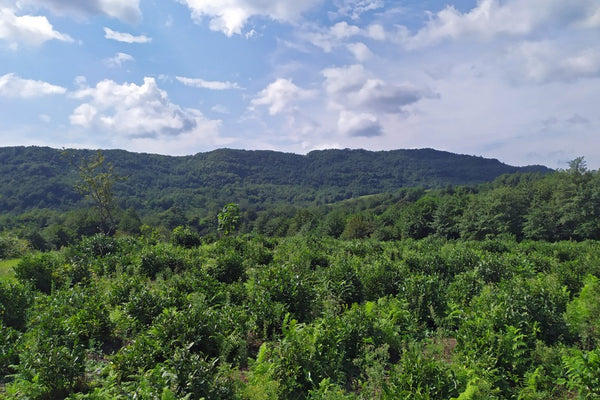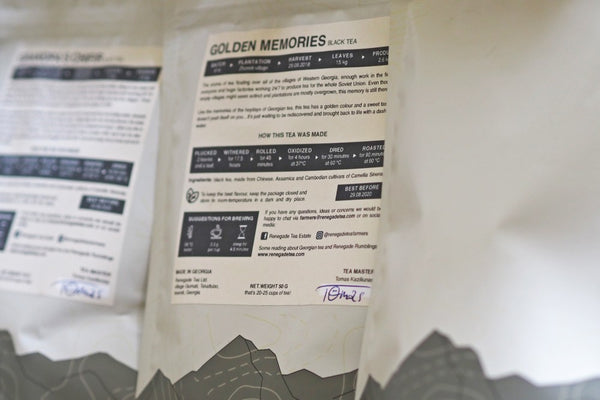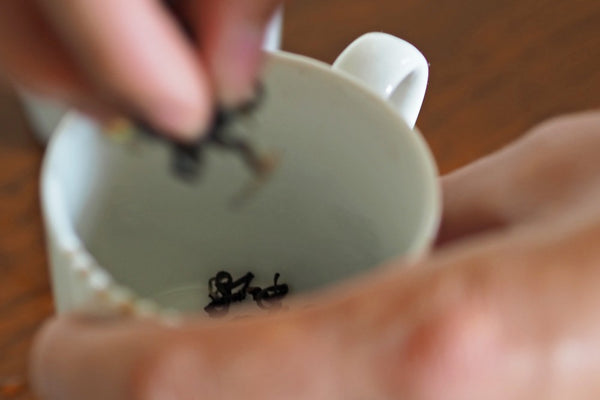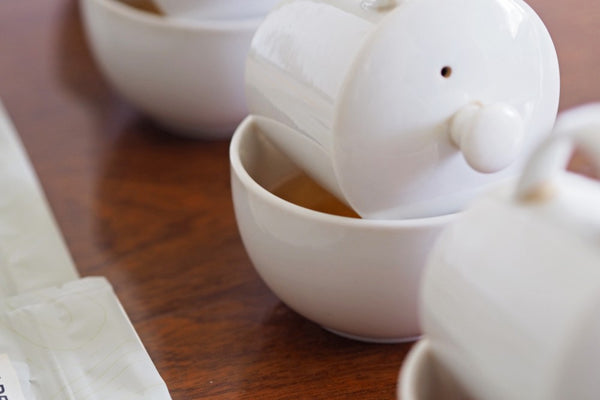How to have a tea tasting event like the Renegades
Kristiina MehikGuestpost by Silver Ader
This is a quick guide to tea tasting, Renegade style. Read on to find out how to have a tea tasting event like professionals.
If you have not heard of them yet, Renegade Tea Estate is an Estonian-Lithuanian joint venture in Georgia. Their mission is to revive the Georgian tea industry and making the best organic teas possible.
I had supported their Indiegogo campaign and followed them on socials since. After that one message led to another and... In 2019 September I visited them in Kutaisi, Georgia as a long-awaited part of an adventure trip to Georgia.

This is what their tea plantation in Opurchkheti looks like. The photo was taken on the following day.
Soon after meeting them in Kutaisi they offered me to join a regular tea tasting like they do every time new batches of tea get ready for packing. This means five or more rounds of tea tasting on a same day!
Disclaimer, this invitation to visit them was a „thank you“ as I had advised them a bit with content planning. Writing about this has been my own initiative and as an avid tea drinker, I confirm that they do make great teas.
White tea?
At first, Priit teased me with a bowl of warm water saying it’s very very high-quality white tea and I even fell for it! :)
A large wooden table was soon set with white ceramic teacups, bowls, tea in different packages with batch numbers and a laptop for taking notes. The tea kettle was boiling in the kitchen.
From the Renegade crew, Kristiina, Hannes, Miina, Priit and Tomas were present for these rounds of tasting. I met with Mario the next day at the tea factory too.
As a side-note and a fun discovery, it turned out many Renegades have studied Marketing at Tallinn Economics School as have I.
So on to the tea tasting part.
Huge ah-ha moments! What affects the taste of organic teas?
It turned out many seemingly small things do actually affect the taste of organic tea. Even if a batch (which may be hundreds of grams or several kilograms) is made according to same procedures, there are many variables.
- Was it raining during the picking day?
- Was it sunny?
- Did the harvested tea leaves wait in the factory for a few hours before withering or just 10 minutes?
- Were the leaves picked into a bag instead of a weaved basket where more air flows through? And so on...
All such nuances and their combinations affect how each batch of tea actually turns out. Sometimes this creates a new tea in e-shop or a limited edition of existing tea.
Sadly these differences are lost in industrially mass-produced tea.
First, have different teas ready for tasting
Renegades already had this step covered. Different batches of green tea were on the table and most had been made following the same „recipe”.
Be ready to take notes
Notes help to remember how THAT tea tasted and smelled like. For Renegades these help to describe each batch for internal use and eventually, branding new teas.
Most of what you see on the Renegade Tea Estate's packaging has come from those same initial notes and scribbles after a tasting.

Snap of packaged tea waiting to be shipped out
Remove variables
It always makes sense to re-create the same conditions for each tasting. Teas are different enough, so the cups or bowls, amount of tea and water temperature should be kept the same from tasting to tasting.
Use same cups or bowls every time
The Renegades used small ceramic teapots and tasting bowls. The bowls did fit nicely to palm and had a wide rim so aroma spreads out evenly.
Measure the same amount of tea to each pot
Each bowl was placed on a small scale and then a specific amount of tea was dropped in. 3 grams per pot.

Kristiina adding 3,0 grams of tea to each teapot
At this point, the first entry was made to the notes for that tasting
First impressions of each tea’s aroma in the bowl before pouring water on it.
Which nuances are there? Is it on the stronger side? Or more subdued? What does it remind you of? Grassy? Lemongrassy? Smoky? Or chicken soupy?
Miina kept notes and everyone else around the table were taking turns smelling each tea and commenting what does it smell like. You had to grab a tea bowl quickly before somebody else reached for it!
Heat the water, 75 degrees Celsius for green tea (167 degrees Fahrenheit)
They used an infrared thermometer for measuring water temperature.
Let the tea steep for 3 minutes
Then tea was put to teapots and hot water was poured over it. We used a timer on a mobile phone and discussed if it’s better to measure three minutes with a timer or stopwatch function. Opinions differed.
Pre-heat tea bowls
Pouring hot water to tea bowls beforehand heats up the bowls a bit. You may or may not choose to do it at home. According to Renegades it helps with the taste too.
Finally, pour tea from the pot to the tea bowls…
It’s an important step.
 Pouring tea from pots to bowls
Pouring tea from pots to bowls… and start filling the rest of the tasting journal
Here comes the real tasting part. It’s a must to have a separate column in notes spreadsheets for each next observation.
Note the aromas and compare
Freshly brewed teas are in front of you. What do you notice in the aroma? Grassy? Lemon? Hints of earth? Is it strong? Any overpowering notes there?
As the tea cools down a bit, aroma changes. There are top, base and bottom notes just like with perfumes.
What does it look like?
Is it yellow? Green? With black tea, how dark is black? Considering that these green teas were prepared according to the same procedures, almost each of them was a bit different in most ways.
Taste and compare
Take a small sip and really pay attention to it.
How astringent is it, does it dry the mouth a bit? Or not so much?
What about first taste? And aftertaste? Different nuances? Anything else that the taste reminds you of?
It was interesting how the initial aroma and taste may differ. With some teas, the initial aroma was very strong and pleasant, and the taste very mild with different notes.
Miina was actively taking notes while everyone else were commenting. Chicken soup and hay bale were two descriptions often mentioned phrases in every step.
Finally, what about the tea in the pot?
How do used tea leaves look and smell like? These may have yet another nuance to it than taste or aroma of prepared tea.
Notice how things change as the tea cools…
After five minutes the tea is quite cool. This again brought out subtle nuances in aroma and taste.
Second or third steep?
Quality teas can be used for several steeps and it still tastes excellent. In this case, repeat the process with the same tea. Sometimes even four or five cups of tea can be made from the same leaves during the evening.
Repeat until needed
Renegades had many more batches to taste, so such tastings happened several times a week. On that day they had at least 5 rounds with different tea batches. Taste, wash the bowls, repeat. It’s a marathon, not a sprint for sure!
Have you thought of having a tea tasting of your own?
